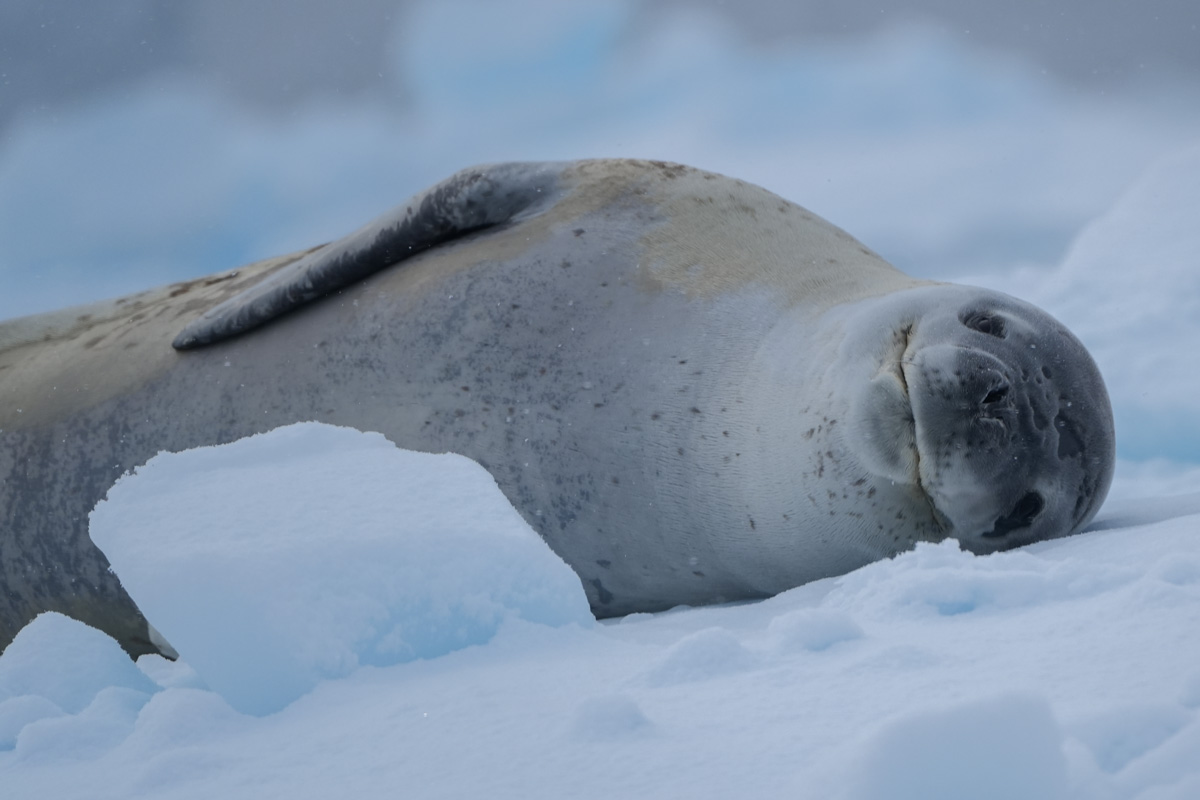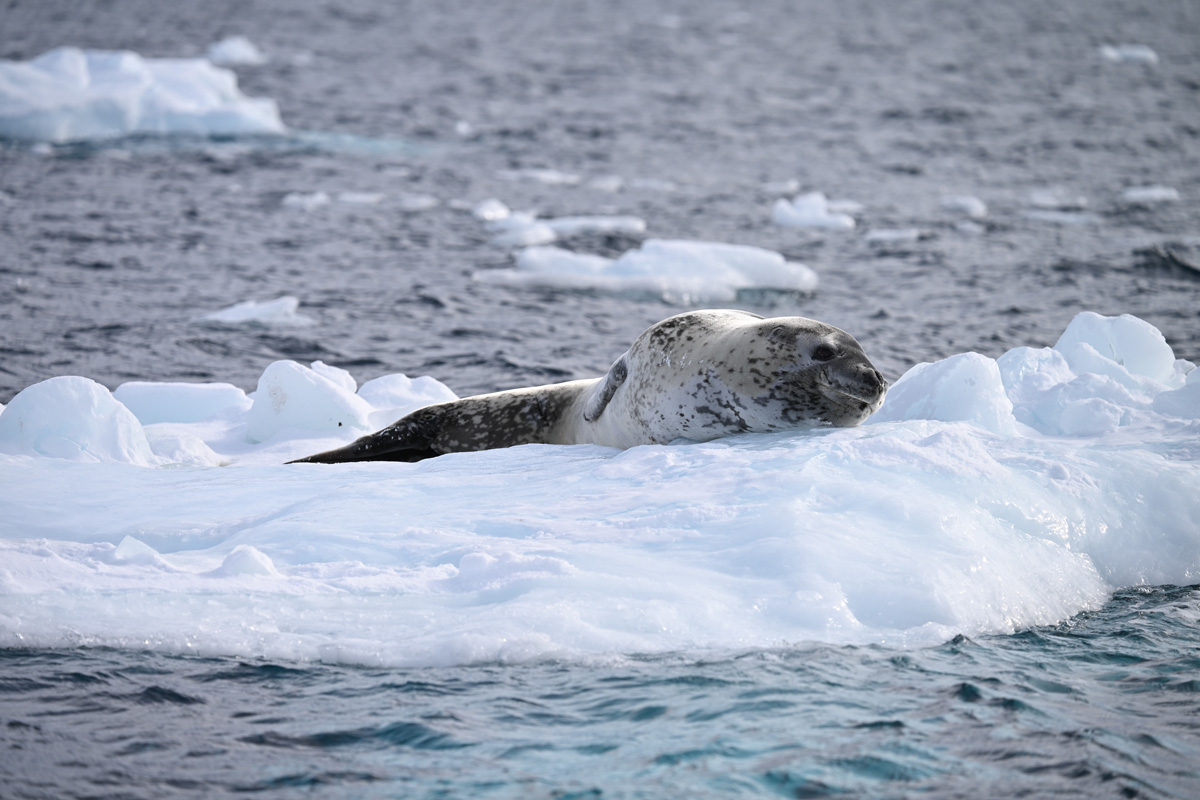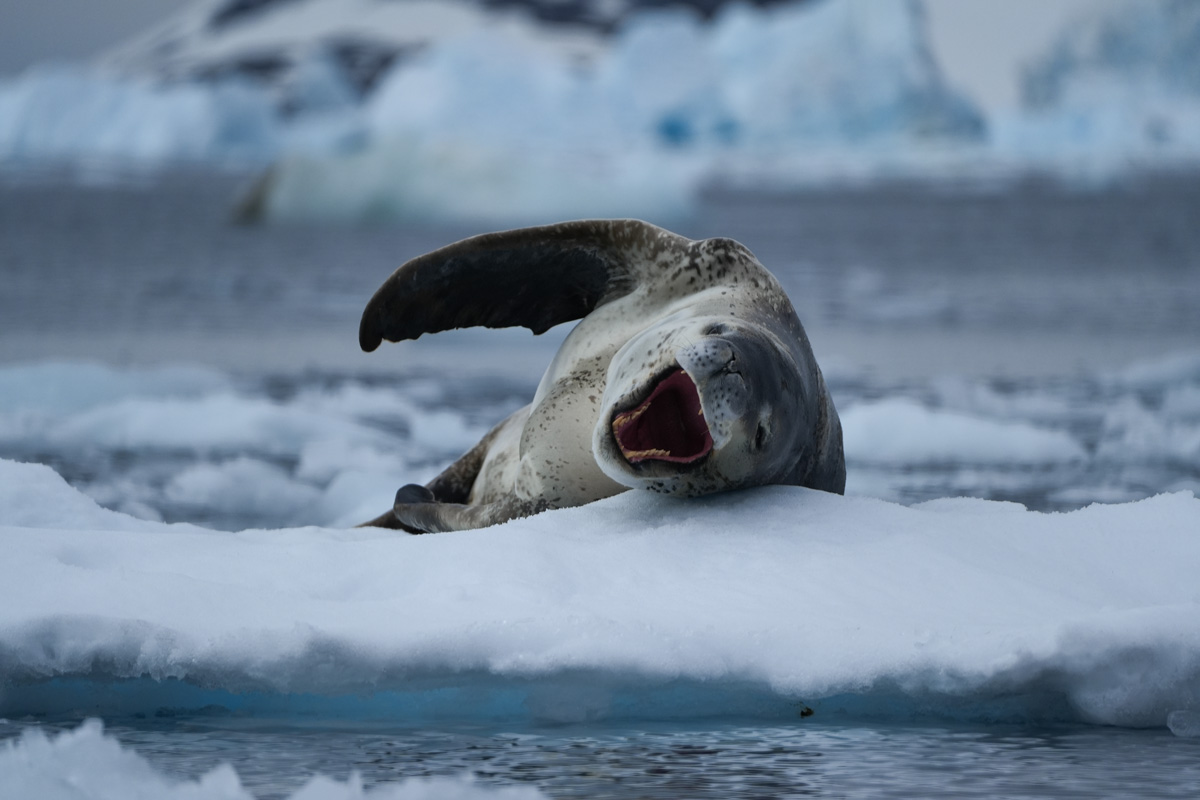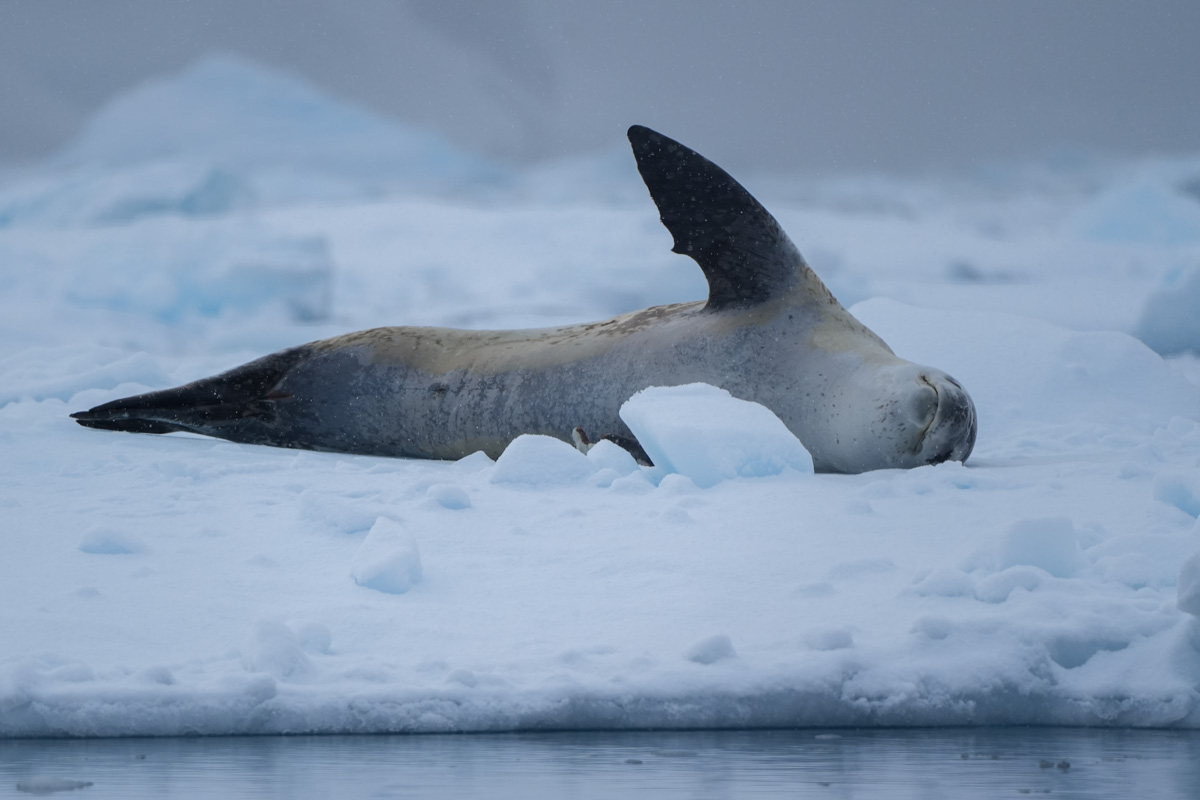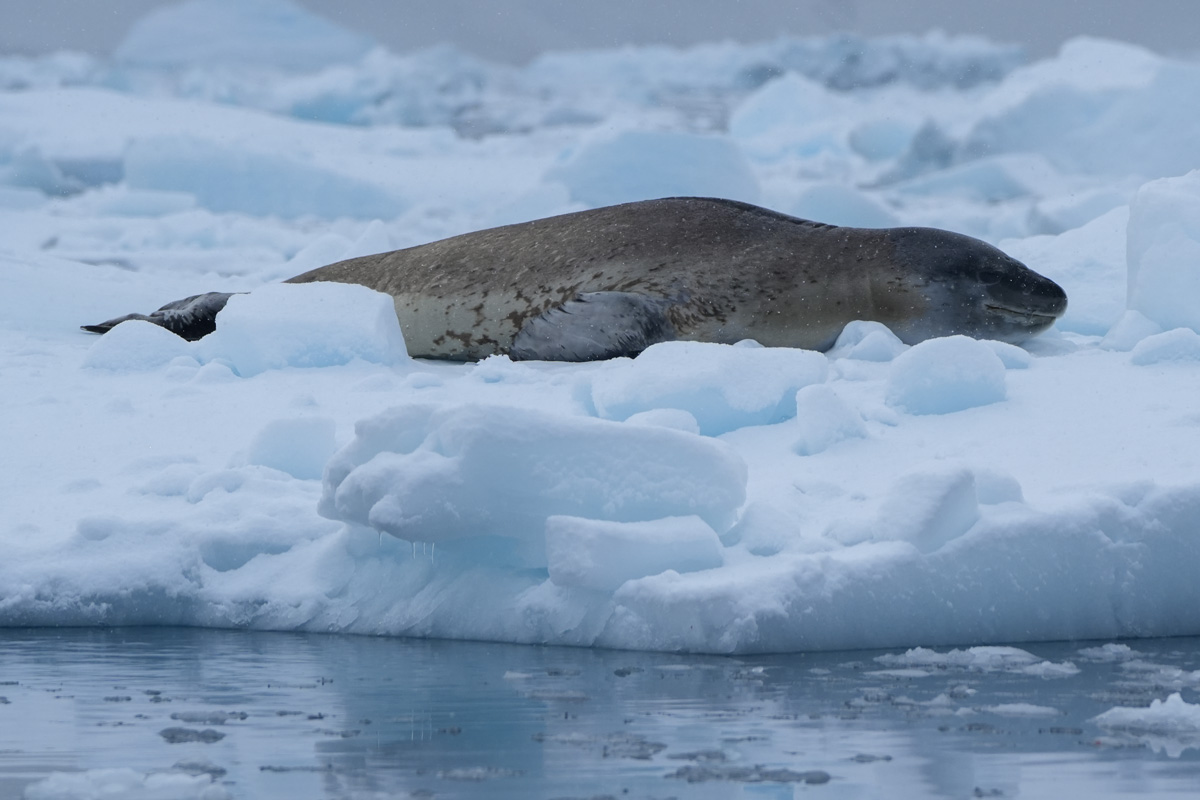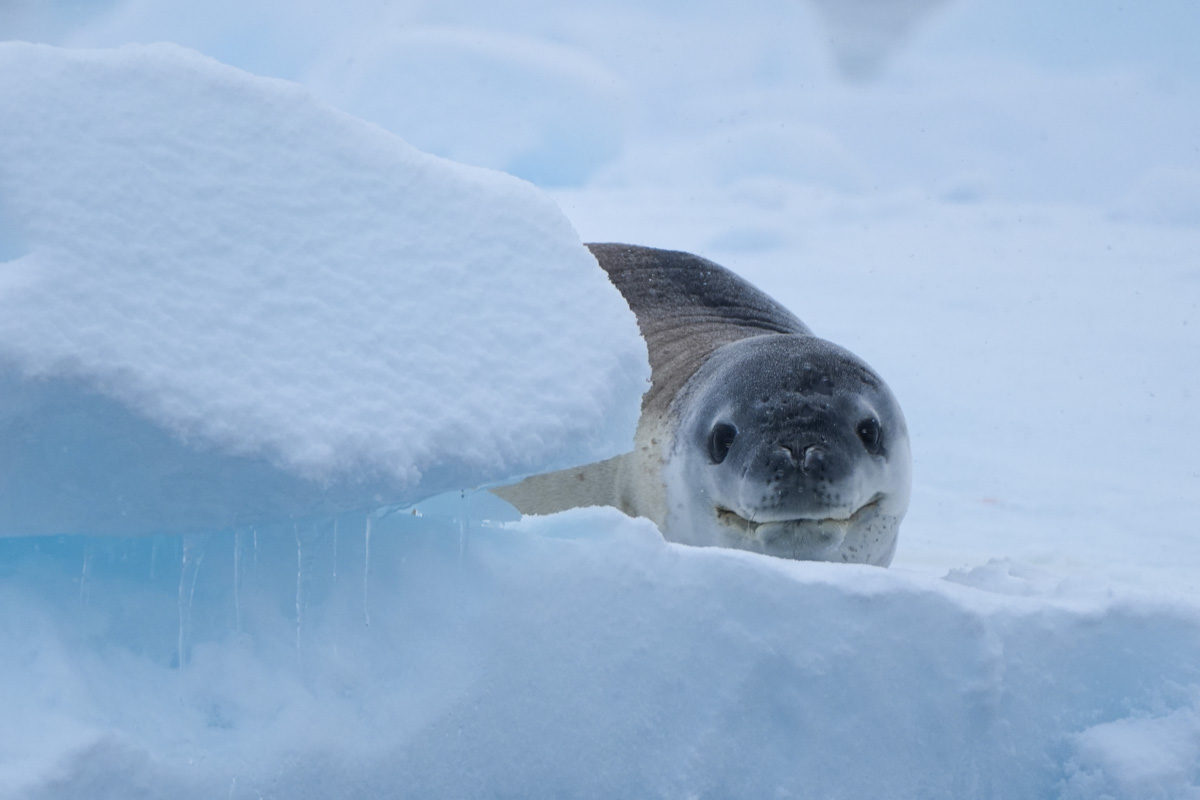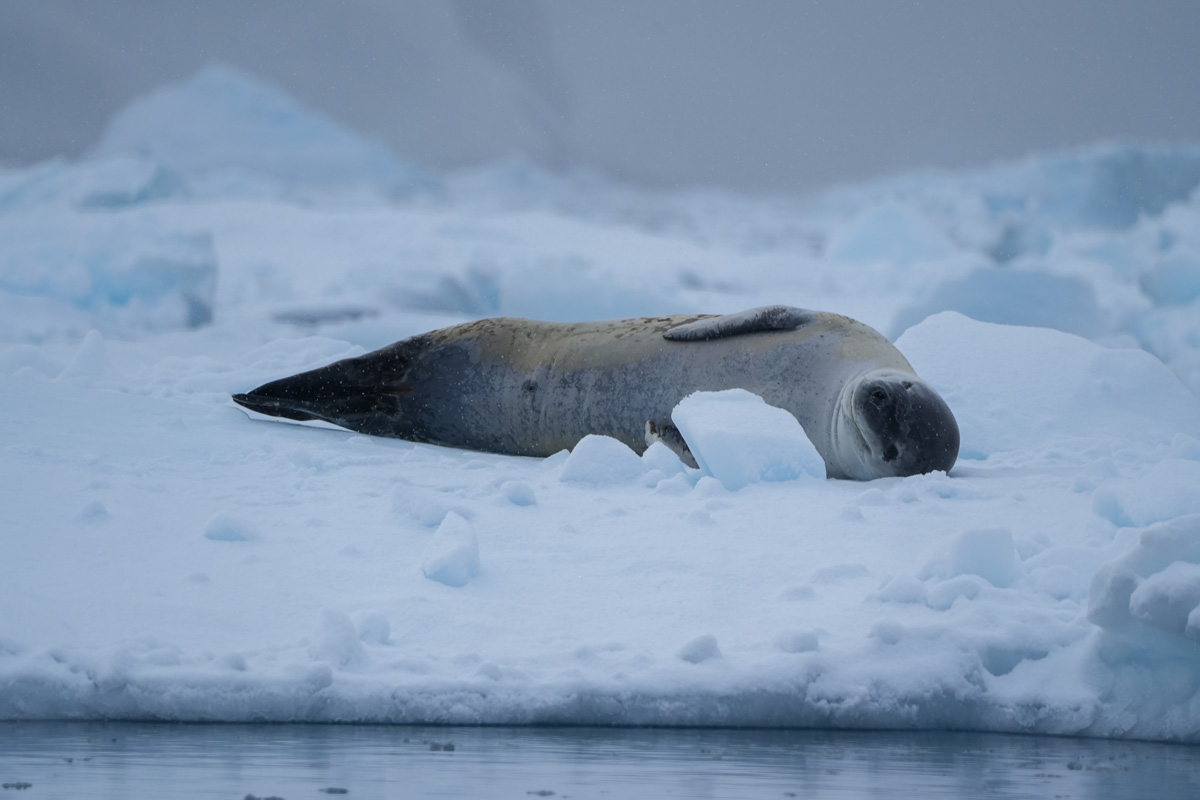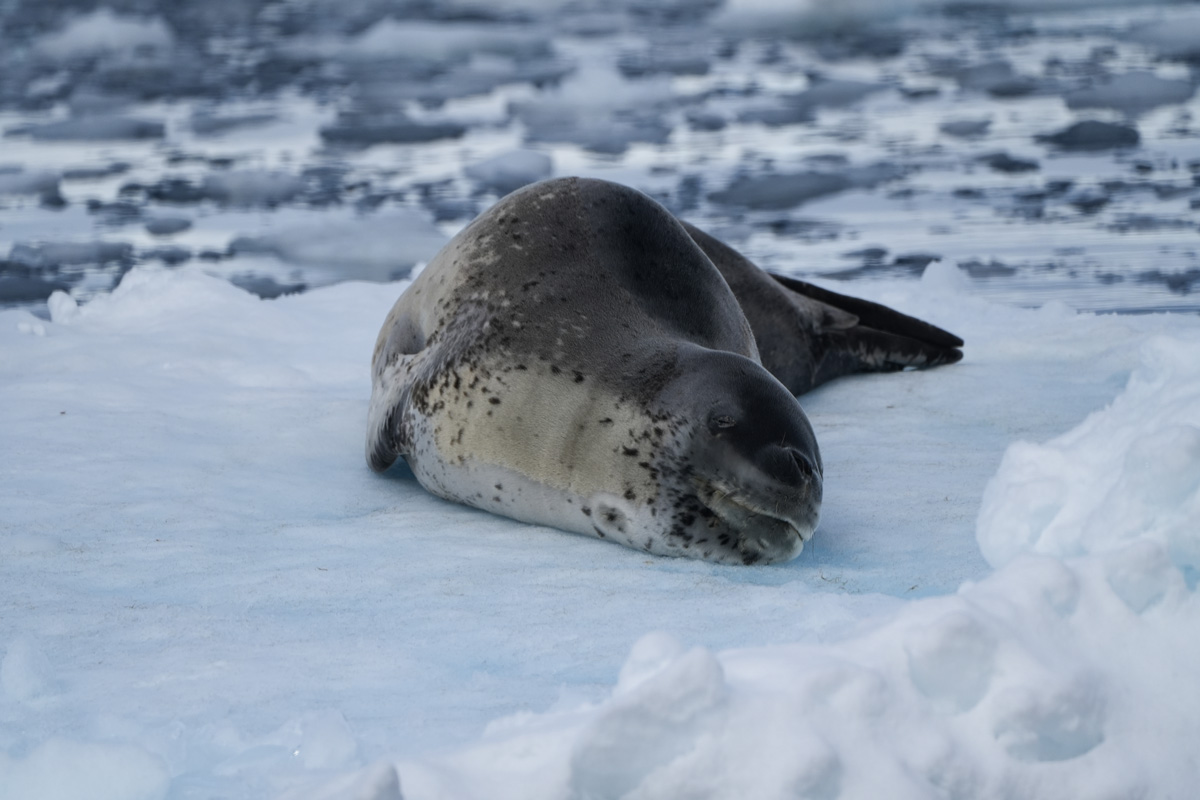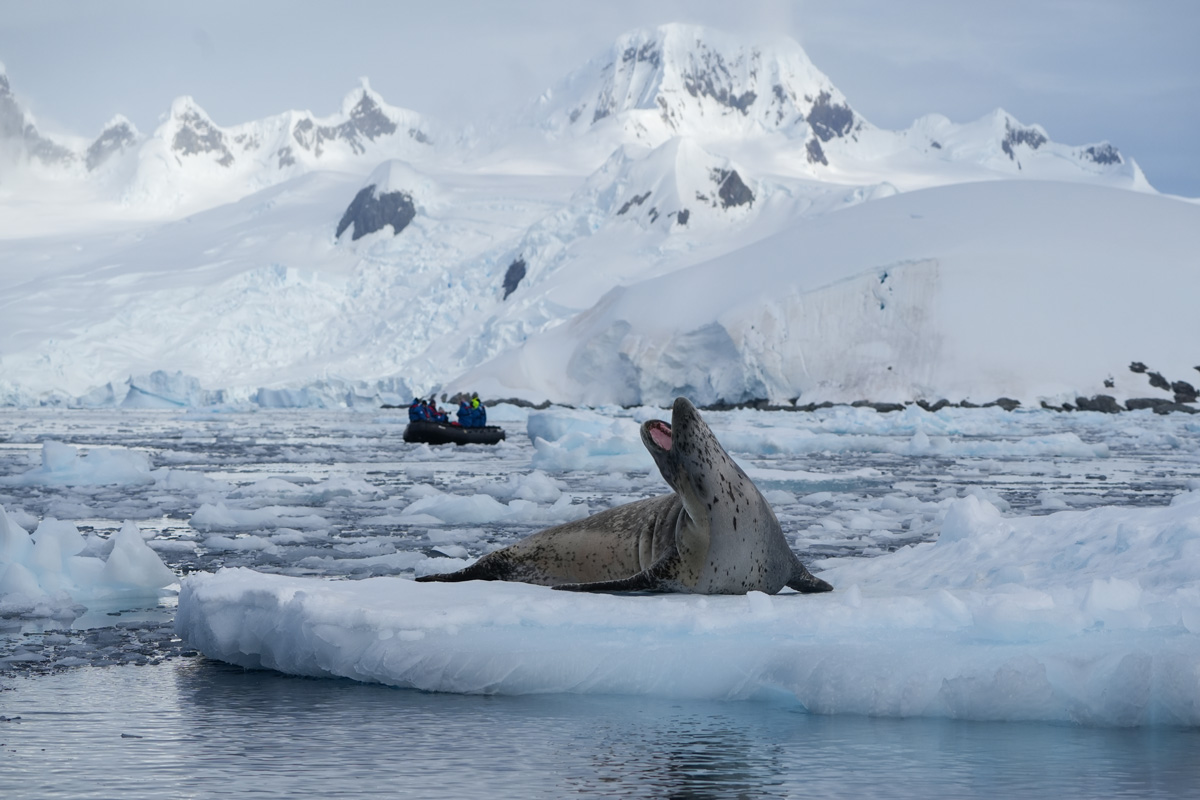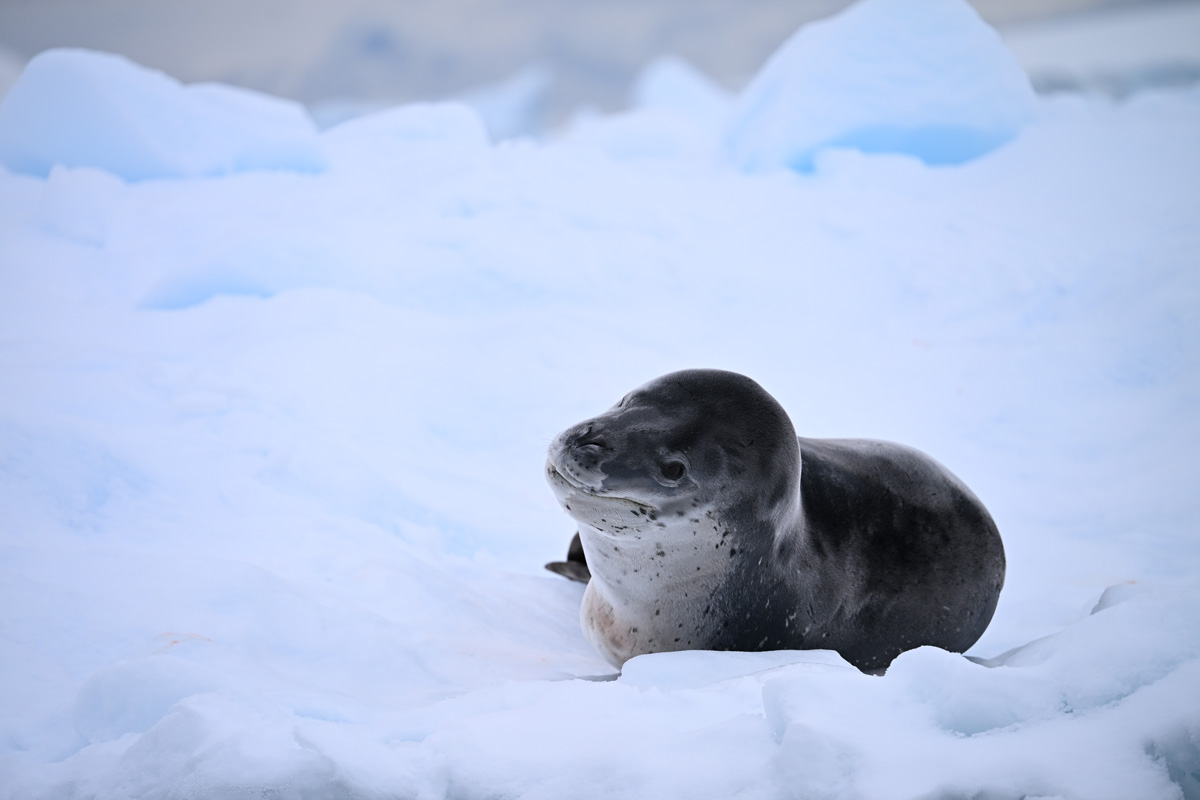Interesting Facts About Leopard Seals
Introducing the Leopard Seal- one of Antarctica’s top predators and most fascinating and forbidding creatures of the seal species. While Leopard Seals are often encountered on our voyages, these surprisingly agile animals are a coveted wildlife sighting. Keep your camera at the ready and enjoy identifying this spotted hunter that lazes on ice, chases penguins, and yawns widely to show you its impressively sharp teeth.
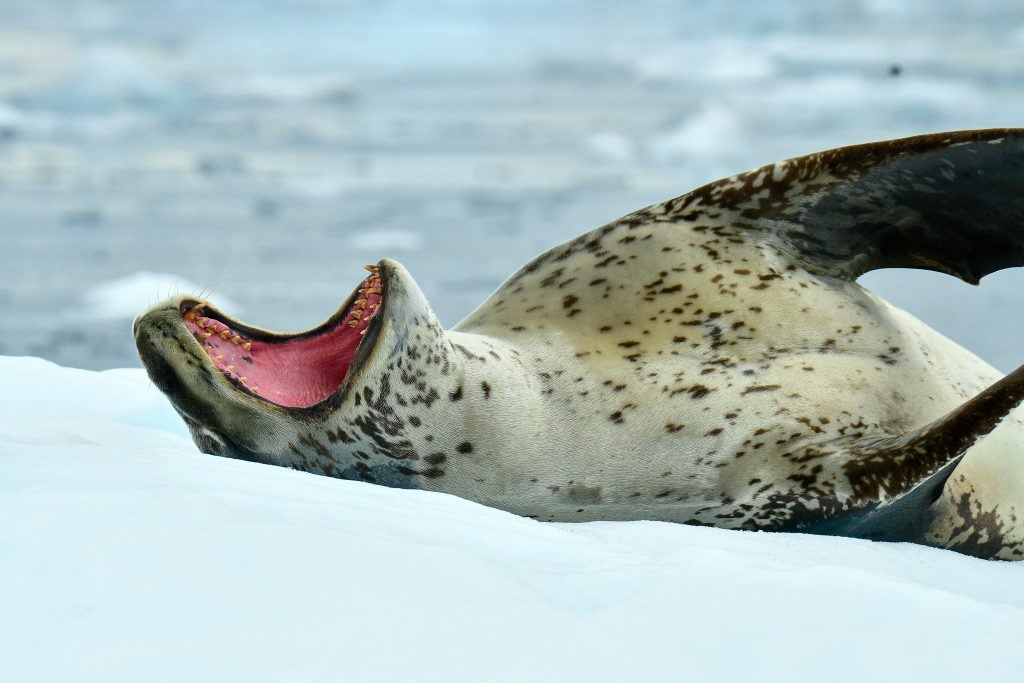
See one of the fascinating sea leopards during your voyages with Polar Latitudes Expeditions!
Leopard Seal Quick Overview
| Scientific Name | Hydrurga leptonyx |
| Population | Estimated at 250,000–400,000 globally |
| Regions | Antarctic and sub-Antarctic regions; most common in western Antarctica |
| Destinations | Falkland Islands, South Shetland Islands, Antarctic Peninsula, South Georgia |
| Average Length | ~2.4-3.5 m (7.9-11.5 ft) |
| Average Weight | ~200-600 kg (440-1,320 lbs) |
| Diet Habits | krills, penguins, fish, seabirds, and even young seals (crabeater seals, fur seals, and elephant seals) |
FAQs About Antarctica’s Top Predator
What is the origin of their name?
‘Hydrurga leptonyx’ is the Latin name for leopard seal. They are aptly named Leopard Seals or ‘Sea Leopard’ due to their black-spotted coats and predatory nature. They are slender and powerful creatures that have long canine teeth for grabbing prey.
How big is a leopard seal?
Following Elephant Seals and Walruses, Leopard Seals are the 3rd largest pinniped. They have long serpent-like bodies with a large head and huge foreflippers. Though streamlined in appearance, a leopard seal size is typically of 200 kg to 600 kg (~1,300 pounds) in weight and measures between 2.4 m and 3.5 m (10 ft) in length, with the females being the larger of the two sexes.
What does a leopard seal eat?
The leopard seal diet is very varied. It is a muscular predator with a large mouth, featuring prominent sharp front teeth and molars (about 2.5 cm), occupying the same ecological niche in Antarctica as polar bears do in the Arctic. Baby leopard seals feed mostly on krill, using teeth suitable for this purpose. As it matures, they are not picky eaters as their diet transitions to penguins, seabirds, and fish. Large leopard seals hunt other smaller and weaker seals, including pups of crabeater and fur seals.
Who are their natural predators?
Although it is the top predator in Antarctica with the highest position in the food chain, it should also look after itself. Their only natural predator is the orca (killer whale). They can swim up to 23mph (37kph) making them fast enough to launch themselves out of the water and onto ice or land to avoid being caught. Interestingly enough, pups may also be vulnerable to larger seals of the same species!
Can a leopard seal kill a human?
Do you think leopard seals attack humans? That is a controversial question because this top predator is known to be uncommonly curious and almost playful, but at the same time, it can be extremely dangerous to humans. While not common, there have been some reported cases. What usually happens is that they can get quite close and may have bad habits such as biting holes in the pontoons of Zodiacs. Although most encounters assume that those seals are non-aggressive, they should always be approached with caution. When encountering one, we follow strict distancing measures. These animals are always treated with the utmost caution.
Where does the leopard seal live?
They are solitary creatures and usually prefer their own company, as they do not interact well with others. Except for breeding periods, these seals are mostly seen on their own, lounging on floe ice or diving into the water to chase their next meal. The leopard seal’s habitat includes the pack ice and the edge of the permanent ice, particularly near penguin colonies in open areas. This species is widespread across Antarctica and is also found on many sub-Antarctic islands, such as South Georgia and the Falkland Islands, and occasionally along the southern coasts of southern continents. Its greatest concentration is in western Antarctica, south of South America.
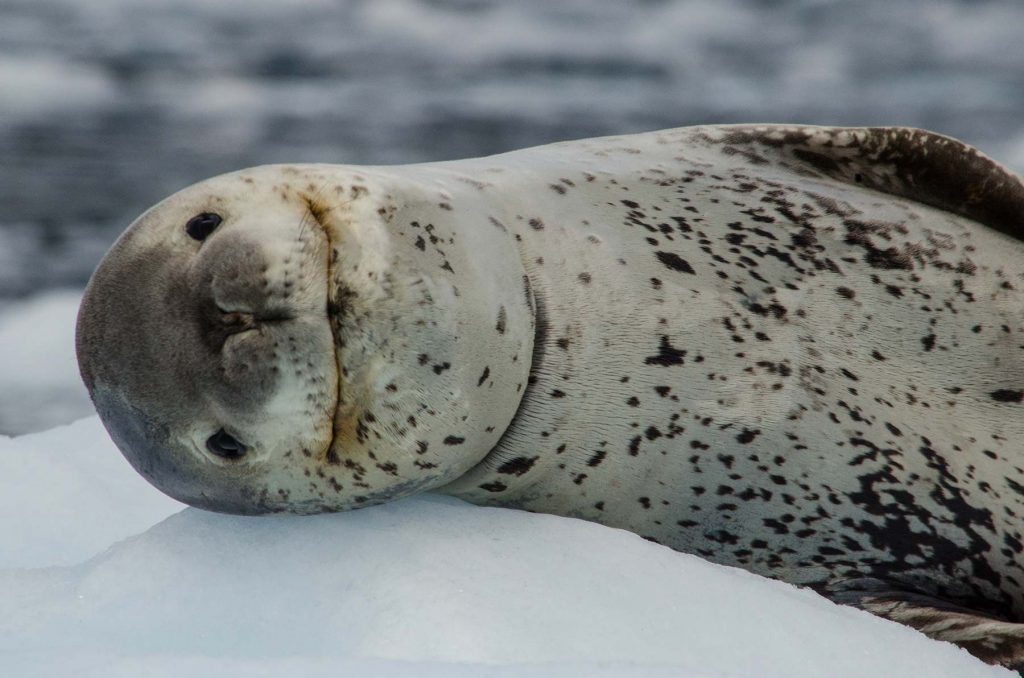
Leopard Seals ‘smile’. The edges of their mouth turn upward, creating the impression of a smile (or menacing grin)
How Many of These 10 Leopard Seal Facts Did You Already Know?
Fact #1: Known as the “sea leopards” due to their aggressive hunting method and sizable jaws.
Fact #2: Leopard seal teeth are used to tear and cut prey apart.
Fact #3: Leopard seal attacks on humans are rare, but they could happen!
Fact #4: They are vocal, producing powerful, varied sounds used in different contexts. These sounds are unique and vary by age and gender.
Fact #5: A female leopard seal gives birth to a single pup.
Fact #6: Leopard seal pups are born weighing about 30 kg.
Fact #7: Their Latin name translates to “slender-clawed water worker”
Fact #8: There is a fascinating true story about a photographer who encountered a Leopard Seal underwater, and instead of attacking him, the seal repeatedly brought him live penguins in an attempt to teach him how to hunt.
Fact #9: These amazing creatures are extremely vocal and sing underwater. Since they breed in water, it’s only natural that they call out in search of a mate
Fact #10: They are not endangered, as they are listed as ‘Least Concerned’ on the IUCN Red List.
Join on an Antarctica adventure with Polar Latitudes Expeditions and witness the wonders of Antarctica wildlife!
Interested in seeing these awesome creatures first-hand for yourself?
Reach out to our teamat any time with your questions or inquiries!

